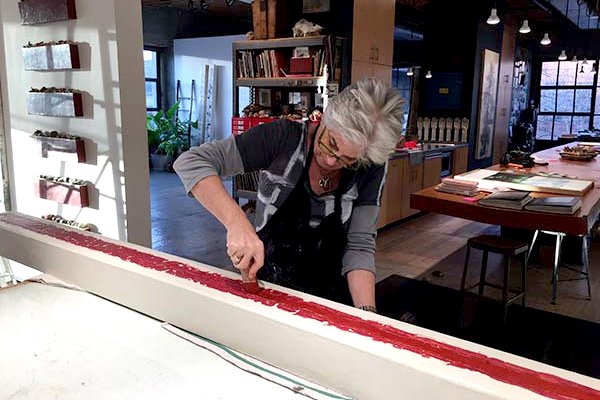See Skinner’s work in WTP Vol. VII #4
Inside the Studio offers a behind-the scenes peek into the work environments of WTP artists, as well as insight into their creative process within these resonate spaces.
By Jennifer Nelson, WTP Feature Writer
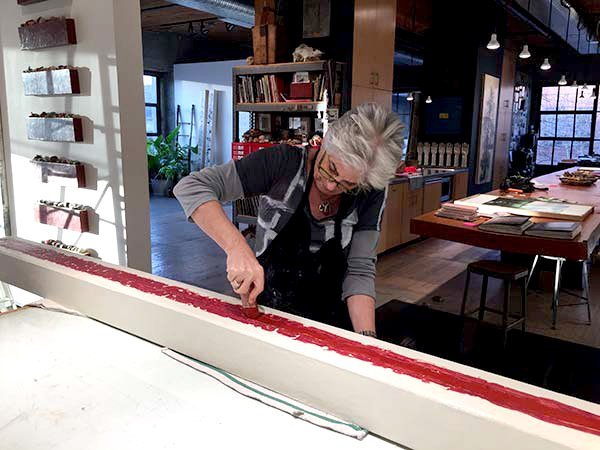
Catherine Eaton Skinner feels fortunate to have two extraordinary studios to create her mixed-media works. In her Seattle studio, she completes more paintings, taking advantage of the city’s energy, while in her secondary studio in Santa Fe, she does more thinking and planning. She divides her time between the two studios, both built fifteen years ago.
“Because I have scheduled travel and weeks in each studio, I push myself to finish projects in that studio before I leave,” says Skinner. “My palette carries back and forth between studios.”
In Seattle, she works on the second floor of a 1910 building, above a bar restaurant. Since she owns a share of the building, she was able to remodel the space. She demolished the interior, starting with a clean space of 4,000-square feet, an 11-foot sandblasted ceiling, hefty beams, an ancient elevator, and new steel windows facing north and west. She hired Tom Kundig, an owner of Olson Kundig Architects in Seattle. “Old building renovation is one of his specialties, and I knew he would listen to my ideas, which, after eight other work spaces, were fairly ingrained and understood,” says Skinner, who considers the Seattle studio her primary one.
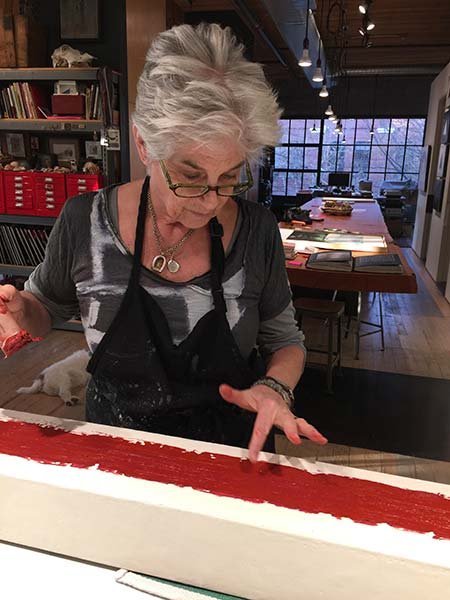
This studio accommodates visiting clients and collectors, as well as corporate and charitable groups. She has plenty of storage space on her floor and in the building’s basement, as well as access to an extensive library, kitchen, laundry, bathroom, and separate work sink. Her assistant of eight years works with her there. “In Seattle, I may prep panels all week and on the weekend, when I have a whole day to myself and am not interrupted by daily tasks, I do the more intense paintings,” says Skinner.
To display her art, she uses four sliding-rotating walls. To cover the storage area, she depends on two moving walls on one track. She designed two glass-covered worktables with open storage areas. “The flexibility of these walls and tables allows for multiple projects in process,” says Skinner. “I am able to move walls for photography and light in specific areas, and have an LED system of lights above.”
In contrast, the Santa Fe studio is a free-standing building designed by Gayla Bechtol Architects. Like the Seattle studio, it comes with a kitchen, bathroom, small storage area, and two identical tables. It’s a short distance to her home, allowing her to come and go throughout the day. A 14-foot table accommodates her printers and iPads, while her Takach press is on a wheeled stand for monotypes. She has similar materials here as she does in Seattle, though there are fewer of them. She tends to keep her things organized in the same place, allowing her more time to work and less time looking for them.
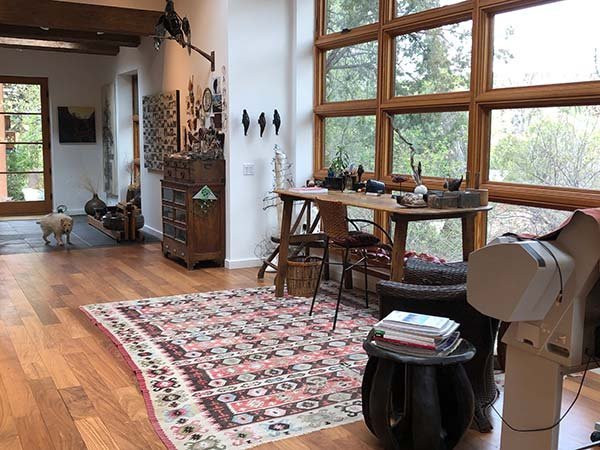
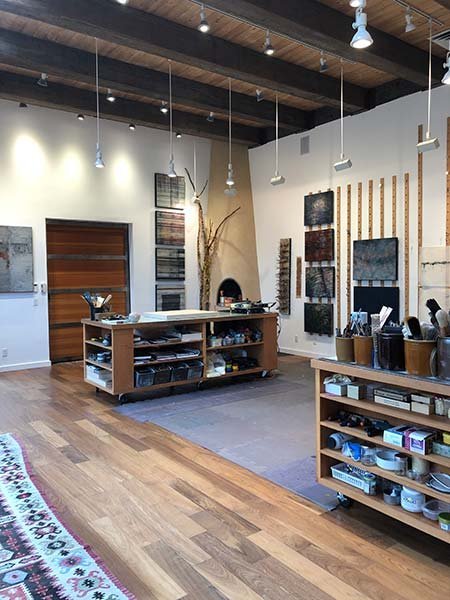
“This studio is my quiet retreat, with a writing table facing a wall of windows looking to the horses, the river, and beyond to mountains and sky,” says Skinner, who became interested in living in Santa Fe part-time after attending two Art Institute residencies.
After taking care of home matters, Skinner starts work at 11 a.m. and stops at 6 p.m., five days a week, and sometimes even on weekends. If she’s painting with encaustic wax, which takes an hour to heat, upon arriving she’ll prep projects and plan what comes next. Between paintings, she’ll often work on her notebooks, cataloging her ideas through series and projects. “The writings, drawings, photographs, and references to contemporary art allow me to consider my past work as well as the newest,” she says.
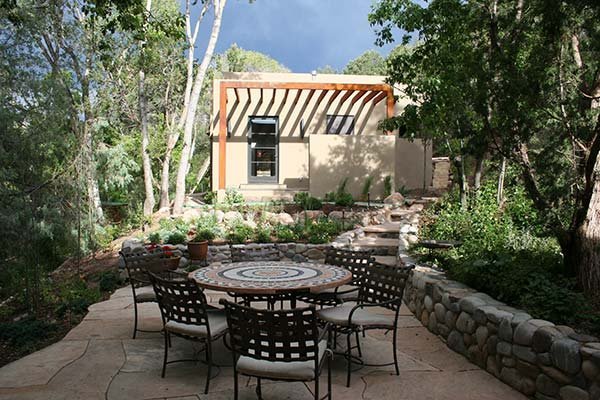
For Skinner, studios are private places in which energy flows through artists, allowing them to create physical objects. Most artists protect that energy and space. “We must be there in that space not as a weekend occupier, but as a full-time resident, working, just working,” says Skinner. “Otherwise, we may miss that special moment of happening, when you look at what you have done and say ‘who did this.’”
Copyright 2019 Woven Tale Press LLC. All Rights Reserved.

